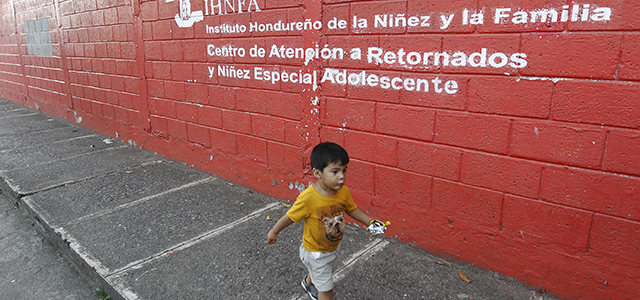
The number of unaccompanied minors from Honduras apprehended at the U.S.-Mexico border shot up from less than 7,000 in fiscal year 2013 to more than 17,500 through July this year, making Honduras the country of origin for the highest number of those minors.
Here are some facts and figures to help understand the conditions that Hondurans face in their home country and their ties to the U.S., in the years leading up to the surge.
1The wave of all immigrants in the U.S. coming from Honduras — both authorized and unauthorized — is relatively new. Over half of Honduran immigrants currently living in the U.S. arrived in 2000 or later, and about a quarter since 2006, according to a Pew Research analysis of 2012 census data.
2More than 60% of the 573,000 Honduran immigrants in the U.S. are unauthorized, a higher share than those from Guatemala, El Salvador and Mexico, where most other apprehended minors are from, according to an analysis by Pew Research’s senior demographer Jeffrey Passel.
The overall unauthorized immigrant population to the U.S. (including those from Mexico — the largest source) peaked in 2007, and has decreased by about 8% from 2007 to 2012. But the unauthorized immigrant numbers from Honduras, El Salvador and Guatemala have increased since 2007.
3Poor social and economic conditions plague a large share of Hondurans: In 2013, 64.5% of Hondurans were living in poverty, according to the World Bank. That’s mostly unchanged since 2004. It’s also higher than the national poverty rates in El Salvador (34.5% in 2012), Guatemala (53.7% in 2011) and Mexico (52.3% in 2012). In 2013, economic growth decelerated in Honduras to 2.6%, from 4% in 2012, according to the latest IMF assessment.
Income inequality is very prevalent in Honduras, as well. Its Gini coefficient was 57 in 2003-2012 (with 0 being complete equality and 100 being complete inequality). That coefficient was higher than those of Guatemala (56), El Salvador (48), Mexico (47) and the U.S. (41), according to the U.N.
4 The Honduran economy is heavily dependent on money sent home from migrants: In 2012, 15.7% of Honduras’s GDP ($3 billion) came from remittances — the vast majority of which were U.S.-based, according to Pew Research analysis of World Bank data. That compares with 16.5% of El Salvador’s GDP and 10% of Guatemala’s GDP that are based on remittances.
The Honduran economy is heavily dependent on money sent home from migrants: In 2012, 15.7% of Honduras’s GDP ($3 billion) came from remittances — the vast majority of which were U.S.-based, according to Pew Research analysis of World Bank data. That compares with 16.5% of El Salvador’s GDP and 10% of Guatemala’s GDP that are based on remittances.
Those three Central American nations are actually the three most remittance-dependent nations in Spanish-speaking Latin America, by share of GDP. The remittances they received in 2013 are estimated to be higher than their peak before the recession.
5Honduras leads the world with the highest homicide rate: In 2012, some 90 people were murdered for every 100,000 inhabitants. That’s more than twice the rate in El Salvador and Guatemala, and more than four times the rate in Mexico. San Pedro Sula in Honduras — the largest source of unaccompanied minors — is the world’s “murder capital,” with a homicide rate of 187 per 100,000 inhabitants in 2013. Organized crime and street gangs are pervasive in Honduras, accounting for 34.8% of all homicides in 2010, according to the United Nations Office on Drugs and Crime. In 2012, just 49% of Hondurans said they felt safe walking alone at night, according to Gallup.


